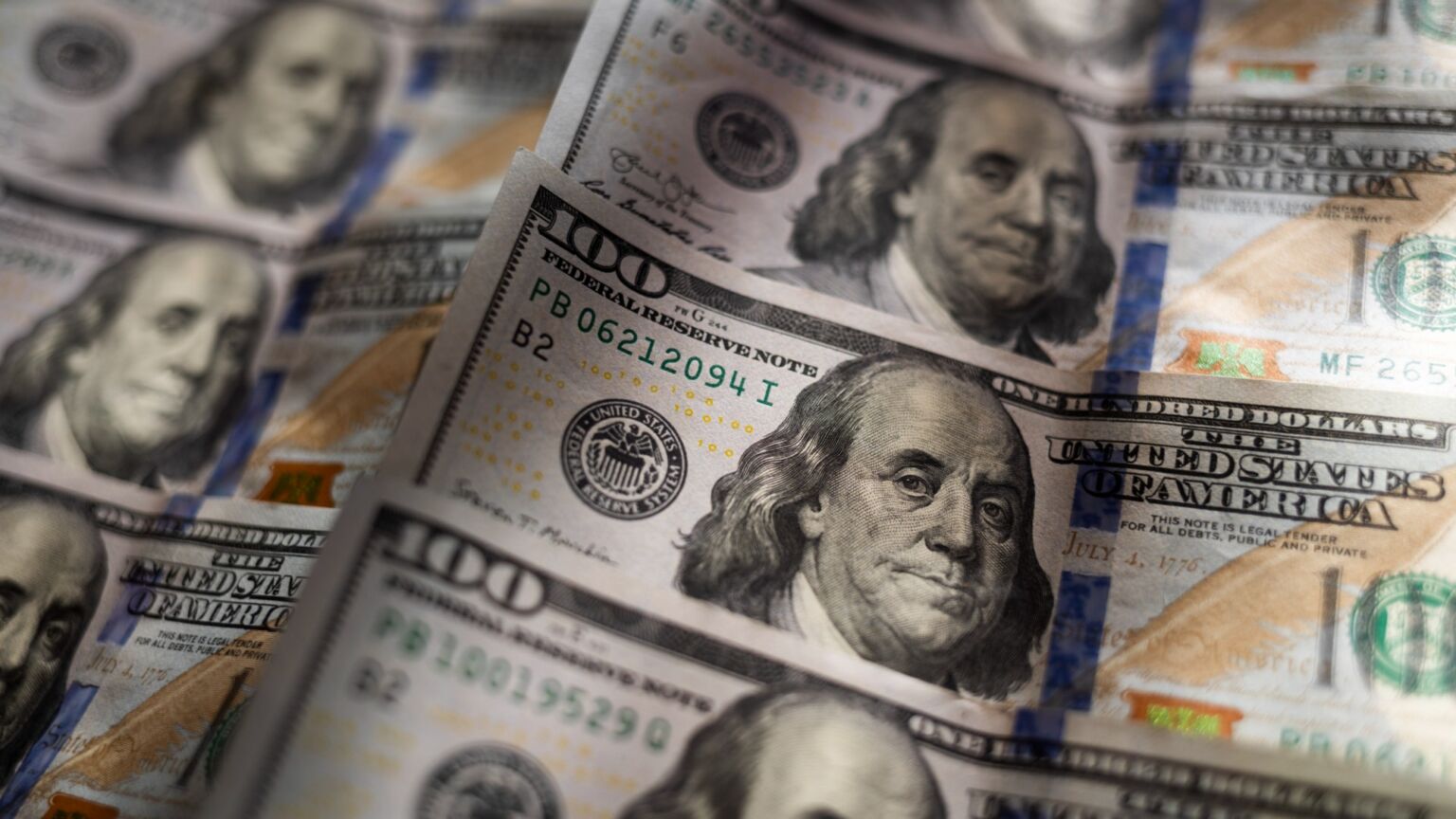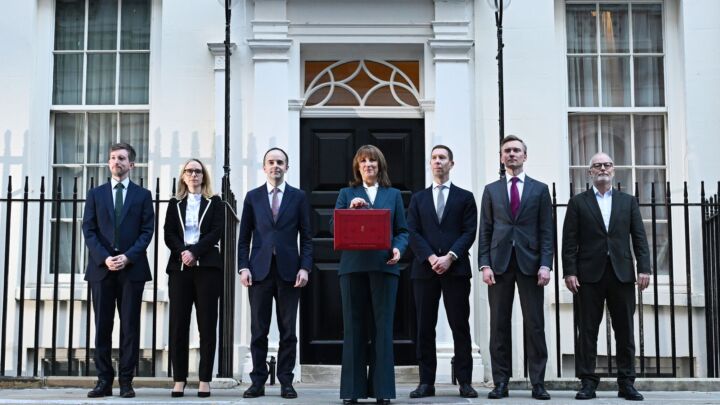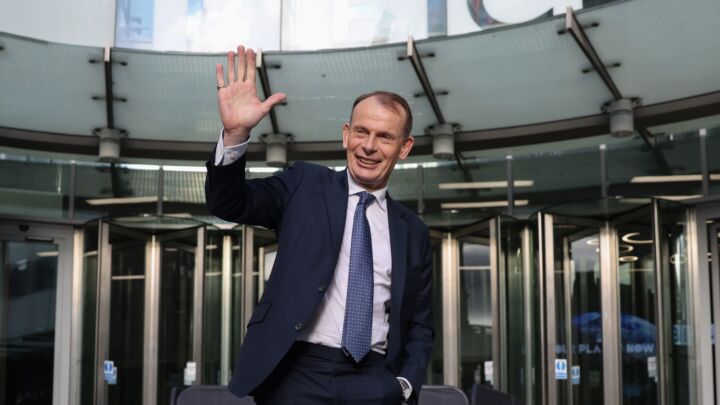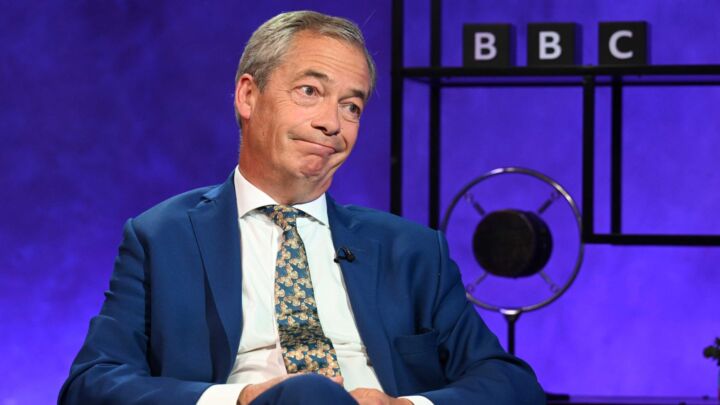Could this be the death of the dollar?
The global power of the US currency has been declining for decades. Trump’s tariffs could deliver the final blow.

Want unlimited, ad-free access? Become a spiked supporter.
The single most important prop sustaining the US economy today is the global power of the dollar. America’s relative prosperity (which until recently was dubbed ‘US exceptionalism’) rests far more on the role of its currency than on its tech companies, abundant resources or famed entrepreneurial spirit. Because the dollar is accepted as world money, when the American state and its corporations spend or borrow abroad, foreigners have been willing buyers. This has enabled a seemingly endless flow of cheap money to support the economy at home.
Today, however, this special benefit is looking increasingly vulnerable. And the greatest threat to the dollar’s status doesn’t come from Russia or China or even Europe, but from the US government’s own actions.
The US government borrows money by selling bonds called ‘treasuries’, mainly to banks, pension funds and foreign governments. In return, it pays them interest – called the ‘yield’. If investors start selling off existing bonds, their prices drop and yields go up. To attract new buyers, the government then has to raise the interest rate on newly issued bonds.
When the first of Donald Trump’s ‘Liberation Day’ import tariffs kicked in on 5 April, holders of American government bonds began to dump them. Trump’s subsequent threats to remove Jerome Powell as the Federal Reserve chair only added to foreigners’ concerns. The sell-off led to a sharp spike in 10-year treasury yields, shooting up from 3.9 per cent to 4.5 per cent.
This level of volatility is unusual for treasuries, long seen as the safest of safe assets. In times of turmoil – even turmoil originating in the US – investors typically flee to them. That is what happened during the 2008 financial crisis. But now, America’s status as a safe haven is itself being brought into question.
A currency’s strength is based on that nation’s economic dynamism. A country with strong productivity can compete internationally, generating demand for its currency. Over time, sustained productivity translates into political and social stability, reinforcing its currency’s appeal as a store of value. Geopolitical clout further boosts its international use, encouraging foreign governments to hold the currency in their reserves. It becomes ‘as good as gold’ – but with the added benefit that its assets generate a financial return.
The more a currency is used by others, the more attractive it becomes. Even hostile governments can end up adopting it, both to facilitate transactions and to store value. In the history of industrial capitalism, only two currencies have achieved this status: the British pound in the 19th century and the US dollar since the interwar years.
It would be neat to point to Trump’s tariffs as the starting point for the demise of the dollar, but its dominance has been eroding for decades. The first major break came in 1971. As US trade deficits grew, the dollar’s convertibility into gold became unviable, leading then president Richard Nixon to detach its value from gold. The dollar was then backed only by the government’s ability to generate revenue. As a result, the dollar’s share of global reserves fell from 77 per cent in 1970 to 70 per cent by 1980.
The next major blow was the Wall Street-centred 2008 financial crisis. As such, the US-led global financial system lost credibility and was further undermined by the inadequate international response. Hard-nosed financial investors noticed that Washington no longer seemed to have the means or the political will to act as the world’s economic locomotive. This impression widened in the ensuing decade under presidents Barack Obama and Joe Biden, as well as under Trump’s first term. Their administrations all acted increasingly unilaterally, implementing more protectionist measures and weaponising the dollar to sanction countries like Iran and Venezuela.
Geopolitics, though, helped put off the dollar’s demise. The leaders of most Western nations preferred to hide from reality and presumed that the US would always be there to bail them out in times of crisis. As a consequence, they kept faith with the dollar. The share of foreign reserves held in dollars trended downwards, but only to 61 per cent on the eve of the Covid-19 pandemic.
The third shock came in 2022. After Russia’s invasion of Ukraine, the US froze a large share of Russia’s dollar-dominated assets. This move sent a message to governments worldwide: their dollar holdings could one day be used against them. While the UK and most of the Western Europe stuck with the status quo, many others began to diversify away from the dollar. By the end of last year, the dollar’s global share had fallen further to 58 per cent.
Instead, central banks doubled their gold purchases in 2022, 2023 and 2024, averaging over one million tonnes a year – mostly outside the West. Gold’s share of Chinese reserves rose from 2.9 per cent pre-Covid to 4.6 per cent last year. For emerging economies overall, that figure went from 10 per cent to 13 per cent.
Trump’s tariffs earlier this year sparked the latest anxiety about the dollar. Despite reduced imports and increased net demand, the dollar has dropped nearly five per cent against other major currencies since the tariffs were introduced. The likely explanation is capital flight – investors are selling US assets and moving into euros, yen, gold and even crypto. This is the kind of market behaviour more often associated with fragile developing economies, not with the world’s supposed financial anchor.
Even more concerning are signs from some of Trump’s advisers that a strong dollar may no longer be a policy goal. Stephen Miran, chair of Trump’s Council of Economic Advisers, has floated the idea of a weaker dollar and even hinted at defaulting on US treasuries. Trump’s obsession with the trade deficit may make devaluation seem appealing – imports would become more expensive and exports more competitive. But declaring a policy of dollar devaluation would likely scare off foreign investors. Treasury prices would fall, yields would rise and more countries would look for alternatives.
Why is de-dollarisation such a threat to the US? The benefits of the dollar’s global role have only grown more important as the growth of the US economy has slowed. Since the 1960s, America’s productive strength has declined in relative terms, particularly in manufacturing. As businesses turned to overseas operations for growth, and as public spending outpaced revenue, a strong and stable currency became essential.
A powerful dollar made it cheaper to invest abroad and increased returns on foreign operations. Before 1970, foreign profits made up less than 10 per cent of US corporate earnings. Since the financial crisis, they have averaged about one-third. A strong dollar also allows the government to sell treasuries at lower interest rates, financing deficits without crushing borrowing costs.
That arrangement is now at risk. A falling dollar would make foreign investment more expensive. It might boost the dollar value of overseas profits in the short term, but in the long term it would reduce incentives to hold US assets. We saw the consequences of this in April – as confidence in treasuries fell, interest rates spiked.
The stakes are high. US government debt now exceeds $36 trillion and is growing by over $1 trillion annually. In just the first half of this fiscal year, 14 per cent of government spending went to servicing debt – more than on healthcare or defence. If treasury yields rise further, that burden will only grow. Higher borrowing costs ripple through the entire economy, making credit more expensive for businesses and households alike.
An international retreat from the dollar would expose the fragility of the US economy. The debt trap – long masked by cheap money – would become harder to manage. Defaults, bankruptcies and rising unemployment could follow.
Perhaps such a crisis would spark an overdue debate about the radical restructuring the US economy so desperately needs. But in the near term, it would bring enormous hardship, with little prospect of any government helping people through the slump.
That said, history will not necessarily repeat itself. No single currency is ready to directly replace the dollar in the same way the dollar replaced the pound. The US economy, even in decline, is still much stronger than Britain’s was in the mid-20th century. While the US has lost its top spot in global trade (overtaken first by the EU and then by China), its decline has been modest. It went from 14 per cent of world trade in the 1980s to just under 11 per cent in 2023.
Nor is China’s currency a likely heir. Its lack of convertibility and state control make the renminbi unsuitable as a global store of value. A more likely future is a fragmented financial system with multiple reserve currencies, reflecting a new, multipolar world order.
The nature and timing of the next, possibly decisive blow to the dollar’s dominance is impossible to predict. But the broader lesson is clear. As Herbert Stein, an adviser to Nixon, said in 1986: ‘If something cannot go on forever, it will stop.’
When Stein said this, he meant it as comfort to those worried about growing US debt and deficits. In the case of the dollar’s global decline, the implications will be anything but comforting.
Phil Mullan’s Beyond Confrontation: Globalists, Nationalists and Their Discontents is published by Emerald Publishing. Order it from Amazon (UK)
You’ve read 3 free articles this month.
Support spiked and get unlimited access.
Help us hit our 1% target
spiked is funded by readers like you. It’s your generosity that keeps us fearless and independent.
Only 0.1% of our regular readers currently support spiked. If just 1% gave, we could grow our team – and step up the fight for free speech and democracy right when it matters most.
Join today from £5/month (£50/year) and get unlimited, ad-free access, bonus content, exclusive events and more – all while helping to keep spiked saying the unsayable.
Monthly support makes the biggest difference. Thank you.








Comments
Want to join the conversation?
Only spiked supporters and patrons, who donate regularly to us, can comment on our articles.